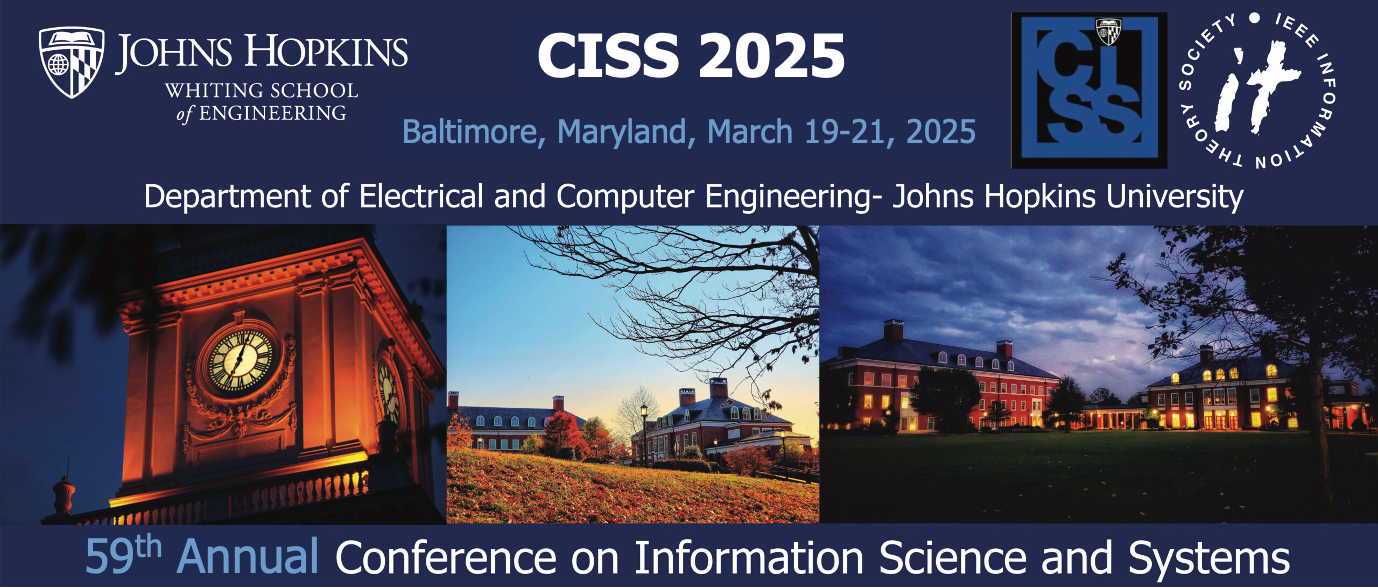Applied Machine Learning II
Session Type: Lecture
Session Code: A2L-C
Location: Room 3
Date & Time: Wednesday March 22, 2023 (10:20 - 11:20)
Chair: Thomas Thebaud
Track: 5
| Paper ID | Paper Name | Authors | Abstract |
|---|---|---|---|
| 3013 | A Computational Method for Improving the Data Acquisition Process in the Laser Metal Deposition | Muhammad Mu'Az Imran, Gisun Jung, Young Kim, Pg Emeroylariffion Abas, Liyanage C. De Silva, Yun Bae Kim | Laser metal deposition (LMD) has developed rapidly in recent years. Although the technology is gaining attention, the data obtained from in-situ sensors are noisy due to the brief processing window and must be analyzed automatically to ensure the reliability of the data acquisition process. Traditionally, researchers used a simple Moving Average (MA) to diminish the peaks of the signals that may inflate the estimation for further data analysis. Spatter is one of the indicators that can describe the process stability of LMD. The generation of spatters is linked to peaks of the signals and has concept drift characteristics. Therefore, this study aims to detect and distinguish between point anomaly and concept drift in data streams in order to remove the extreme values that can mask the actual performance of the deposition process. The proposed method comprises two main components: (1) differencing method to flag the potential point outlier and (2) the density-based method to verify whether the flagged observations are outliers or not. We evaluated and compared our proposed method with the DSPOT method. The results show that our proposed method outperforms the DSPOT method based on the evaluation metrics (Recall, Precision, and F1-score) and the computation time. |
| 3143 | Learning of Doppler Tolerant Radar Detectors for Noise Waveforms | Kyle Wensell, James Zhou, Alexander Haimovich, Evan Young, Lam Vo | This work analyzes neural network learning as it pertains to noise waveform radar detectors. The concept of noise waveform radar is explored, and the core issue of Doppler tolerance is addressed. In order for the network to successfully learn the noise waveform, a pre-processing step of phase alignment is performed on the data to allow the neural network to establish a pattern. The training data is then augmented with Doppler-shifted waveforms, such that this Doppler shift appears in the phase-aligned data. We demonstrate that this pre-processing and training scheme successfully allows for the detector to learn Doppler intolerant waveforms such as the noise waveforms. |
| 3162 | A Machine Learning Approach to Predict the Optical Properties of a Nanocube via Gaussian Process Regression | Ekin Gunes Ozaktas, Alfredo Naef, Giulia Tagliabue | We have demonstrated the use of a Gaussian Process Regression method for the prediction of the scattering and extinction cross sections of a nanocube embedded in a dielectric medium. Our model is sufficiently general to incorporate per- mittivity of the cube and dielectric, cube size, and wavelength as predictors, resulting in a level of generality previously unseen in the literature. We introduce the idea of using the logarithms of the normalized cross sections during training, which improves the accuracy greatly. The model has been able to accurately predict cross sections for cube sizes and materials outside of the training set, in times that are orders of magnitude smaller than that required for a Finite Element Method simulation, thus demonstrating both the speed and predictive power of the simple machine learning approach considered in this work. |
